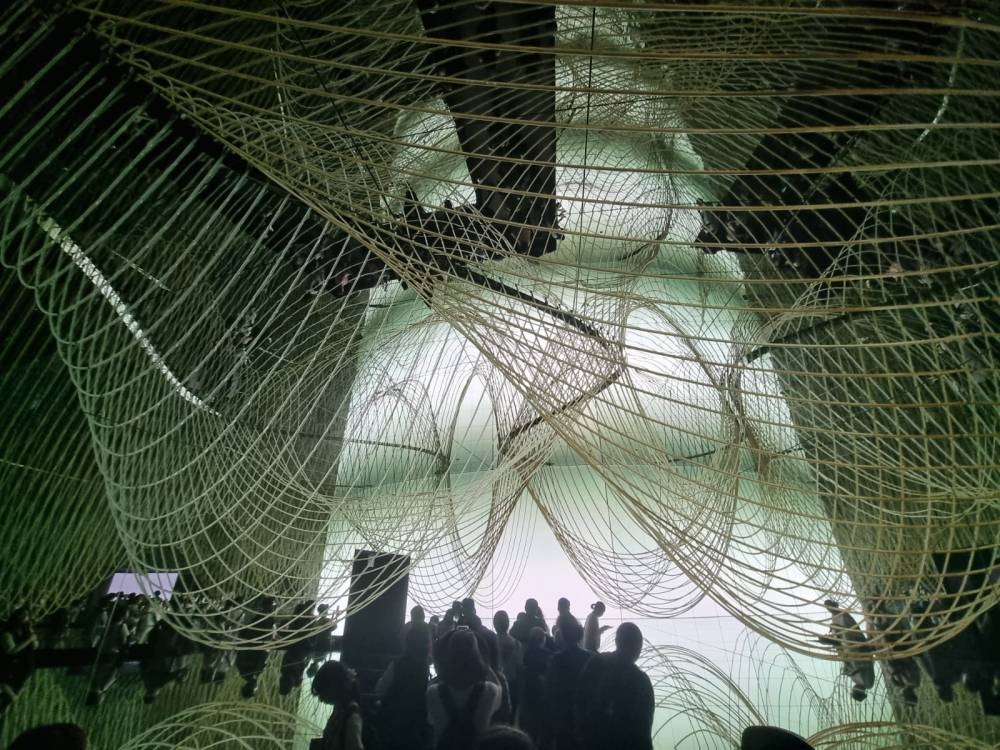Behind Japan’s futuristic Expo showcase lies a deeper goal: turning its domestic pavilions into real-world incubators that would spark breakthroughs in healthcare, digital technology, and green solutions for the future.
This strategy is anchored by two distinct pillars – resource circulation and regenerative medicine – each presented in highly interactive and functional exhibition spaces at the Expo 2025 Osaka.
According to organisers, the Japan pavilion, themed “Between Lives,” serves as the epicentre of this national strategy. Its architecture, divided into unique Plant, Farm, and Factory zones, symbolises the concept of “circulation,” a principle deeply embedded in Japanese culture and craftsmanship.
Masafumi Sugano, deputy commissioner general for Japan’s Ministry of Economy, Trade, and Industry (METI) and director of the Expo’s International Office, told reporters that the pavilion operationalises cyclical resource management by tackling the issue of waste generated on-site.
“Within the pavilion, we actually take rubbish, garbage, trash from the Expo site, we decompose it and turn it into clean water, and methane,” Sugano said. “Then we take the algae (developed from methane) and turn it into valuable products.”
This functional system, he noted, shows how Japan interprets the circular economy, focusing not just on recycling, but on creating business-viable, productive systems that remain responsible to the global climate.
“It shows how we interpret the circular economy in Japan, which is something that I’m sure would be interesting for Qatar,” he added.
Sugano said the commitment to circularity extends to the structure itself, pointing out that the wooden panels used in the pavilion’s architecture are designed to be repurposed across Japan once the event concludes.
Adding a playful touch to this environmental pledge, the pavilion also features an array of algae – 32 unique types – some represented as popular, adorable Hello Kitty characters, flourishing in a warmly lit “forest of the future”.
Complementing the focus on green innovation, the Pasona Natureverse pavilion explores the future of healthcare, highlighting revolutionary regenerative medicine based on Induced Pluripotent Stem cells (iPS).
iPS technology allows adult cells to be “reprogrammed” back to a pluripotent state, enabling scientists to differentiate them into any required cell type. This breakthrough, discovered by Nobel Laureate Dr Shinya Yamanaka in 2009, forms the basis of two groundbreaking exhibits.
Carla Alonso from the Pasona Group presented the iPS Heart, an artificial heart model created by transforming some 200 million skin adult stem cells into beating heart muscle tissue.
“What you see here is essentially an artificial model of a heart… beating completely by itself without any electrical impulse,” she said.
While the exhibit currently displays only the heart muscle tissue, she said the goal is to use this technology within the next 50 years to completely reproduce whole hearts from a patient’s own cells, significantly reducing the high rate of rejection associated with traditional heart transplants.
However, a more immediate application is the iPS Heart Muscle Sheet, which Alonso described as functioning ‘a little bit like a band aid’. She said this sheet is applied to cardiac tissue damaged by heart failure, where it re-integrates into the surrounding tissue and promotes regeneration.
“In around two weeks, new capillary networks can be created and the heart can start to function normally again,” Alonso said. She noted that the technology is already further along; the company behind the specific exhibit, CUORIPS, has completed a successful human trial and has applied for government permission to begin making this a real treatment, positioning it for potential use far sooner than the full iPS Heart.
The theme of transforming society continues at the Osaka Healthcare Pavilion, themed “Reborn,” which offers visitors a tangible glimpse into urban life in 2050.
The interactive ‘Reborn experience’ route captures visitors’ individual health data via a body analysis pod, subsequently generating an avatar showing them their personalised health and lifestyle 25 years in the future. The exhibit pools Osaka’s collective wisdom, technology, and ideas on future cities, food, and culture, creating a powerful, personalized experience.
From personalised healthcare stations like the Cell Design Station and Eye Care station to interactive projections of future cities, the Osaka pavilion highlights that Japan’s Expo presence is not merely about showcasing technology, but about defining, developing, and deploying the systems needed to support a thriving, sustainable, and healthy future society.
Related Story




AloJapan.com